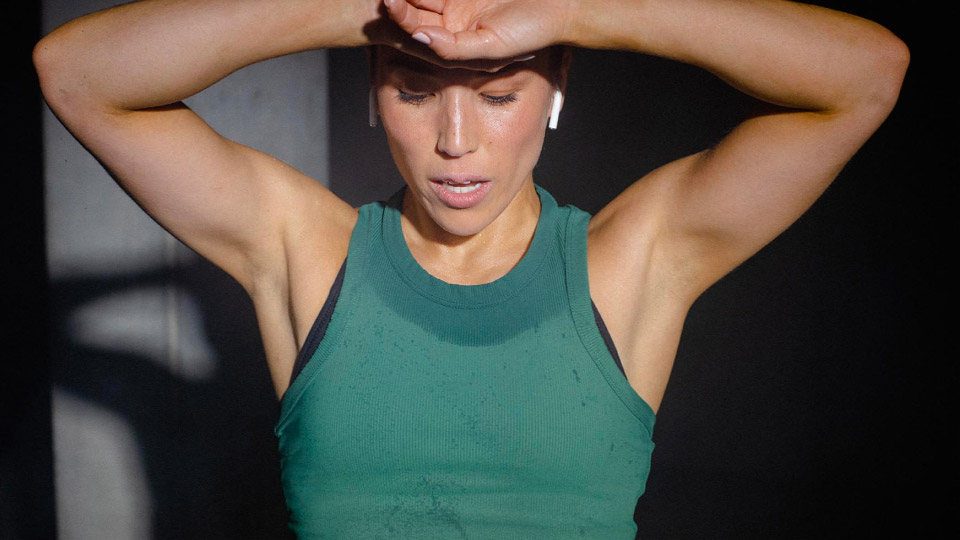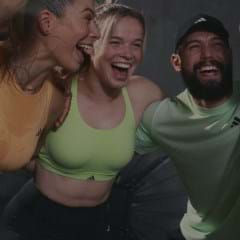As a leading expert on the interplay between music and exercise, Professor Costas Karageorghis believes the right workout music can be a type of “legal performance-enhancing drug.”
Haile Gebreselassie most likely agrees. The Ethiopian athlete smashed the 2,000 meters record in 1998 and famously attributed his pace to synchronizing his stride to the beat of Scatman John’s 1995 hit, Scatman. He said whenever he hears the infectious beat, his running timing and style change immediately.

Scientists are agreed that a good beat can make us work out faster and harder, but music can also make exercise seem easier and more enjoyable. Karageorghis has studied the psychological and physiological effects of music and exercise extensively, finding synchronous music – that which matches the tempo of the exercise – is key to lifting your enjoyment of exercise, as well as driving motivation and boosting results. This type of music is shown to:
- Reduce the perception of exertion by 12 percent
- Improve the effects of exercise by 15 percent
- Boost endurance by 15 percent
- Lift movement efficiency by seven percent
What goes on in our brain when we exercise with music?
Scientists have long known that there are direct connections between the auditory neurons and motor neurons in the brain. Even if someone is sitting perfectly still, listening to music they like increases activity in various regions of the brain that are important for coordinating movements. Some researchers argue that people’s instinct to move in time to music could be put down to this “neural crosstalk”.
UK-based scientist Dr. Bryony L Ross says that when music plays, it’s the hypothalamus (the region of the brain governing hormone release and emotions) and our brainstem (which controls heart rate, blood pressure, body temperature, and muscle tension) that are stimulated.
Brain imaging indicates that when we hear music we enjoy, the parts of the brain linked to reward, motivation, emotion and memory become active, and hormones such as dopamine, serotonin and oxytocin are released. These help us feel pleasure, wellbeing, happiness and love, elevating our mood as we work out and literally making us want to come back for more. Conversely, when we hear music we perceive to be sad or that we associate with a negative experience, we can feel unhappiness or even grief. This leads to increases in levels of the stress hormone cortisone, which can make us quite simply want to up and leave.

Dr Marcelo Bigliassi from the University of São Paulo, Brazil, has spent the last ten years looking at how our neural networks respond to exercise and music and influence our behavior. He has identified that the fusion of exercise and music can rearrange the brain’s electrical frequency to stimulate feelings of positivity and increase the use of dissociative thoughts, such as daydreaming. His studies also show that a combination of music and exercise yields increased activation in the left inferior frontal gyrus – the area of the brain associated with processing feelings of exertion. The increased activation in this region appears to ease negative bodily sensations during exercise. He says the music can also help reduce the neural outputs sent from the brain to the working muscles, effectively blocking the negative bodily signals entering our focal awareness.
The psycho-physical effects of music on exercise depend on a variety of factors, most notably, your experience and capabilities. Those new to a particular exercise, it seems, might be more responsive to music than experienced trainers. It may partly depend on personality – some researchers have suggested that extroverts (who typically seek out external sources of stimulation) are more responsive to music than introverts.
Why moving to music is even better with others
Alongside the individual feelings we experience when we move to music, there’s also the influence from shared experience – something we call “the group effect”. We now know that when we move together in rhythm we become more aware and compassionate toward each other. We perceive more similarities between ourselves and others in the room and because of this, we’re happier sharing our personal space.
Music also amplifies emotions we pick up from the people around us. Researchers at the University of London showed people pictures of happy and sad faces when listening to music that was also categorized as happy or sad, and asked them to rate their emotions. Happy music made the happy faces seem happier, while sad music made sad or neutral faces seem more negative.
The Kama Muta effect
That mix of positive emotions, physical exhilaration and community experience that music provides also has its own name. Coined to describe the sudden feeling of “oneness” we experience when we hear a song that speaks to us, “kama muta” is Sanskrit for “moved by love”. Researchers know it is felt by people all over the world, regardless of race, geography, background or age. Music literally crosses borders to bring us together – so it’s no surprise it’s the soul of every good workout.
What makes good workout music?
Finding the right workout music is both a science and an art. Science tells us there are optimal beats per minute (BPM) and for certain types of training it’s best to match the rhythm and tempo to the activity. In his paper, Psychophysical Effects of Music in Sport and Exercise, Professor Peter Terry provides a good example: “If the goal during warm-up is to elevate the heart rate to 110 BPM, then limit choices to music with a tempo in the range 100-120 BPM or, better still, selections that increase gradually in tempo from resting heart rate (around 70 BPM) up to 120 BPM.”
The ‘art’ part comes in when you start finding motivational music and creatively fusing it with science-backed exercises, something that Les Mills has been perfecting for more than 50 years.
“It always starts with the music,” says Diana Archer Mills, Les Mills Creative Director. “We have to find music that makes you want to move." Diana works with a devoted music team that collaborates closely with Program Directors, choreographers, composers, and artists, listening to thousands of songs every month to pick the 10 or 12 tracks for each new workout release.
The team curates hundreds of unique playlists every year, each tailored to the specific demands of different workouts. Once each suitable song is identified, the team works with record labels to license the track for group fitness classes around the world. To ensure the music is pitch-perfect for every movement in every class, sometimes the team will work directly with composers and commission a Les Mills original or cover. These musicians are part of the Les Mills Artists stable – musicians who frequently work directly with the Les Mills creative team to create music.
“Sometimes there just isn’t enough contrast or enough highs and lows in the track to make it work for an exercise class,” explains Ezra Fantl, who leads the Les Mills Artists initiative. “By working directly with artists, we can create music that feels perfect for the workout. It also allows us more freedom to use music for different purposes, such as livestreaming and marketing.”

The best music for different types of training
Research shows the role of music is particularly important during stationary cycling. In a 2018 report by ukactive and Stages Cycling, music was identified as a critical factor when selecting a group cycling class by 86 percent of respondents.
Rachael Newsham, Les Mills Program Director, explains that while people respond well to high-energy fast BPMs, music with a slower BPM is equally important when the training focus is on conditioning. She says it all comes down to the feelings a song evokes. “We always ask how does this song make you feel? Does it speak to you on an energy level and evoke an emotion that will fit with the journey of the workout.” After all, it’s how you feel at the end of your workout that will keep you coming back for more.
The article includes input from Margo White and Dr. Bryony L Ross.








